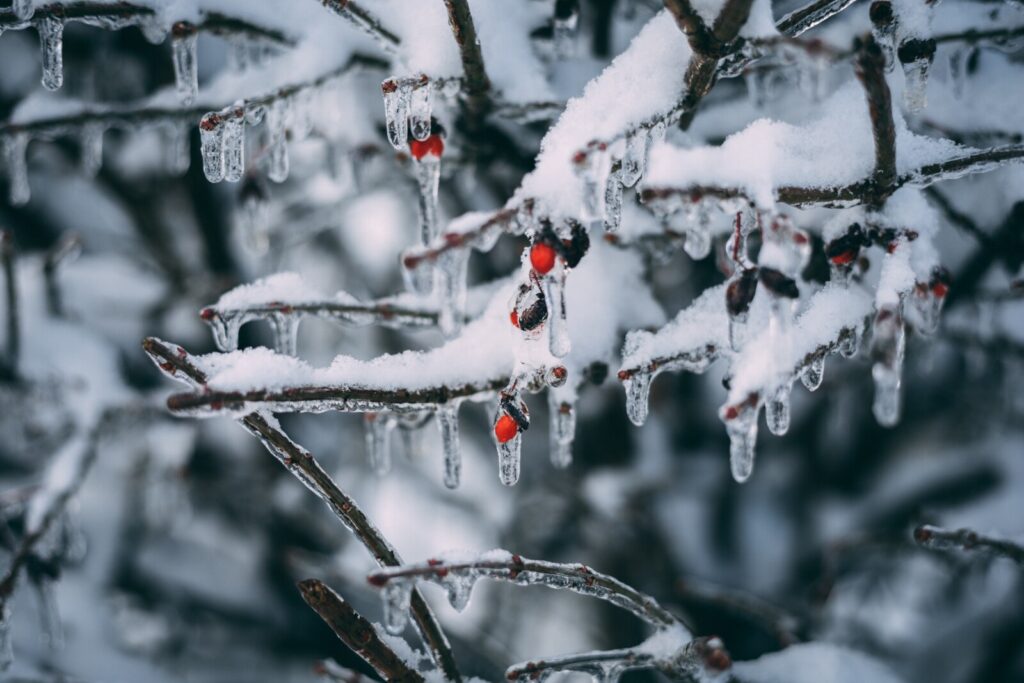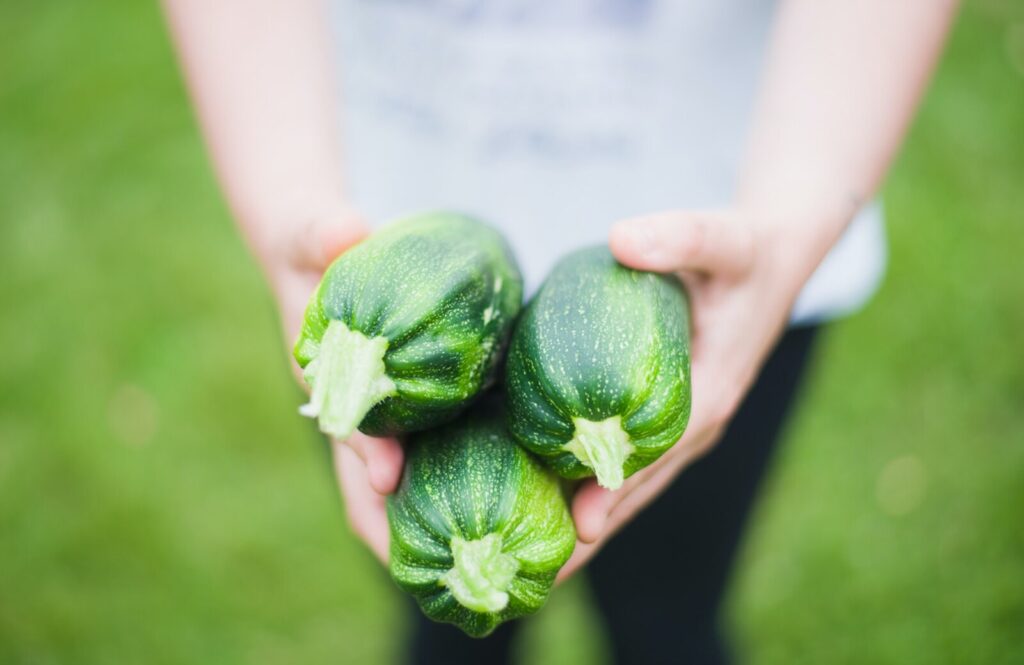
We have a saying here in the greenhouse and that is: “Alberta is one of the most challenging places to grow plants.” We stick by it too because there are so many factors that can impede our progress year round when gardening in Alberta. But who among us isn’t up for a good challenge? Our citizens have managed to dig in their heels and their shovels to garden here. They’re also bringing in beautiful and delicious harvests on the regular. Still, the learning curve is steep for new comers. We hope to bring some insight into our challenges with this post so that we can more easily overcome them.
Elevation
As a garden center located in Cochrane, Alberta, we are in the foothills of the Rocky Mountains. Our elevation here is 1159m. Edmonton for example is only at 645m. What difference does this make to our growing capabilities? Higher elevation means lower air pressure and that can affect how CO2 and other gasses are used by the plants – more of an issue for us though, is that the light at higher elevations is more intense. Because the air is less dense, there is less stuff floating around in it (dust, water and other particles) and that increases the solar radiation our plants are exposed to. On a cool day, that can be a good thing but on a hot one? Watch out for sunburn and crispy foliage.
What can we do? Shade cloths used in the heat of the summer can reduce sun stress on our plants. Clever planting in using tolerant plants to shade more tender plants is advised.

Wind
We really struggle with winds here! High winds are also due to our elevation and proximity to the mountains. When we have a storm in Cochrane we have a rager! It’s not unusual to hear tornado warnings in high summer and our weather can change quickly with gale force winds coming out of nowhere in the blink of an eye.
What can we do? Have a plan for sheltering hanging baskets and plants that could fall from fences or trees. Simply placing them on the ground before a storm can avoid damage. Tomatoes are especially prone to harm when they are heavy with fruit. Planting them somewhere with shelter from wind is a great idea, but covering them in storms might also be helpful. A cover should be weighed down with heavy rocks so it doesn’t fly away in a storm. Some plants with thin, delicate foliage will desiccate quickly from winds and these are best used in sheltered areas where fences or other plants can act as wind breaks.
Extreme temperatures
There are few places on earth that experience -40C in winter and +40C in summer but we see it here in Alberta! It doesn’t seem fair but this is what we’re working with. Finding plants that can withstand both is difficult so our assortment of hardy perennials has been carefully curated. When choosing plants, look at their zoning requirements. Plants in zone 2 will be okay almost anywhere but plants suited for zone 4 might need to be up close to a house for extra protection in a micro climate. Cochrane is officially zoned at 3b but clever gardeners can push their limits.

Extreme temperature swings
Not only do we have extremes on both ends of our temperature scale but we can see them flip from -15C to +15C in the course of a day. Plants hardy to Canadian growing zones require a rest period over winter because they go into dormancy. During a dormancy period they strengthen their root systems and structures so disruption to these processes can be detrimental. We can see plants bud out too early in spring only to have that foliage frozen and ruined. Additionally, if saps start flowing only to freeze again severe damage can occur in the cells of the plants. Temperature swings can also increase the presence of pests, bacterial infections and moulds.
What can we do? Choosing plants that are proven to withstand our challenges is the best way to protect against loss. Gardeners are creative people and are often tempted to make a statement with an unusual planting (and we honestly love that) but when it comes to investment pieces like trees and shrubs – tried and true is key for success in Alberta.
Heat
Alberta often sees hot hot heat in the summer months when most of our garden plants are using all their resources towards fruit production. Plants like tomatoes, potatoes, peas and apple trees will be producing and high temperatures can damage foliage which hinders them in their photosynthetic processes. Without photosynthesis, plants can’t produce the sugars required to grow your food.
What can we do? Shade can help reduce the amount of sunlight and heat that reaches the plants however, we don’t want to block too much light as that hinders them as well. Our best course of action is to encourage lush and healthy foliage early in the season. Providing enough nutrients and water for healthy leaves and roots goes a long way towards a plant’s heat tolerance as the season wears on. Mulching can also reduce heat at the soil level.
Drought
Technically, our climate here in Southern Alberta leans towards arid though, with the rains we’ve had lately this might be up for debate. Still, it’s not unusual to see periods of drought through our summers and we all know plants need sufficient moisture to keep healthy and produce. Combine drought with high heat and fast winds and our plants can be in severe distress quickly.
What can we do? Mulching at the base of our plants helps to keep roots cool and prevent moisture loss. This means you can water less. Without mulch our gardens may need watering twice a day (morning and evening) during high heat, low rain periods. If you plan to be away for a summer vacation, you’ll want to ensure someone can water for you while you’re gone.

Frost free days
Our typical season sees around 100 frost free days. That’s a very short growing season! Because of this some plants aren’t capable of seed germination, growth and fruit production before the frost hits in fall. Winter squash, sweet potatoes and pumpkins are risky in Alberta without mitigations at the ready. It also means that any set back (cloudy days, storms etc) costs us precious growing time. Some plants need temperatures above 13C to be in an active growth state so it further reduces the growing time in early spring and fall for these varieties.
What can we do? Again careful selection of plant varieties will make all the difference between success and failure. Carrots for example can take 3 weeks to germinate and on average a total of 70 days to maturity. That’s cutting it close! Choosing a variety that only takes 50 days instead of one that takes closer to 90 will be essential to your success. Mind you, carrots can be harvested early, you’ll just get a smaller harvest. With other plants like tomatoes, start indoors from seed early in the year, or use a greenhouse into the fall as a great way to extend the season. Another way to gain days of growing time is to purchase pre-started plants from someone you trust 😉
We hope you’ll stand in the face of these Alberta growing challenges and have a garden anyway! It’s a rewarding and mindful experience that benefits us in ways we don’t even consider as we pluck weeds and pinch back suckers. The difficult conditions make the harvest that much sweeter and aren’t we so pleased to see the perennials leaf out in spring? It’s worth it.

We are Cochrane & West Calgary’s largest Garden Center, owned-and-operated by plant-loving locals. We’re glad you’re here. You can visit us 7 days a week in store, or online. Get Directions
Get free gardening resources, monthly coupons, and new arrival alerts, straight to your inbox.
Join Now